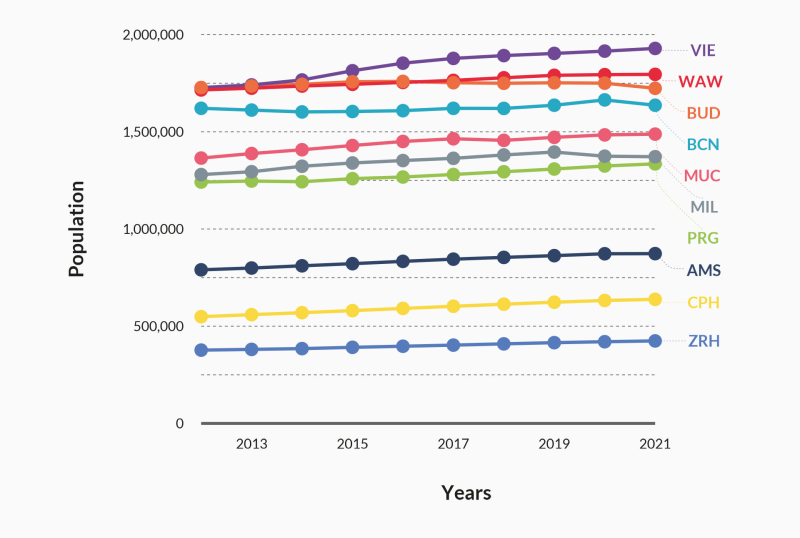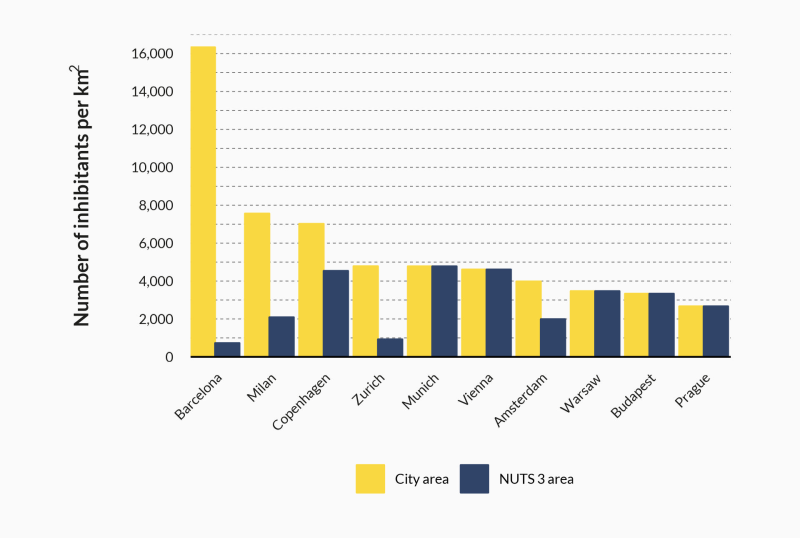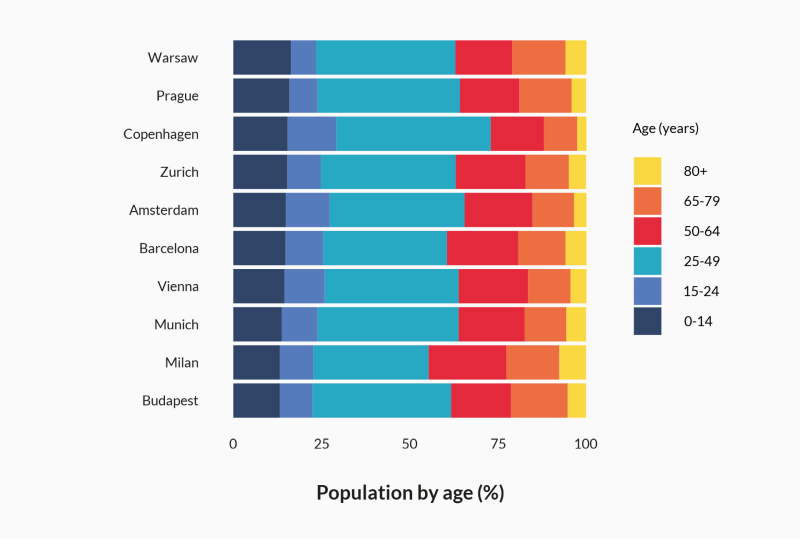The urbanization process has continued over the past decade. However, in some cities, such as Barcelona, Budapest and Warsaw, population growth was less intense. Prague initially reported a population growth of over 10%, yet the results of the Census of Population, Houses and Flats resulted in a recalculation of the relative increase to 7%.
Chart: Number of inhabitants
Year: 2012-2021
Area: City territory
*Source: Eurostat, Czech Statistical Office, statistik.at, stadt.muenchen.de, bdl.stat.gov.pl, ksh.hu, statbank.dk, ajuntament.barcelona.cat, stadt-zuerich.ch, opendata.cbs.nl, statline,dati.istat.it




